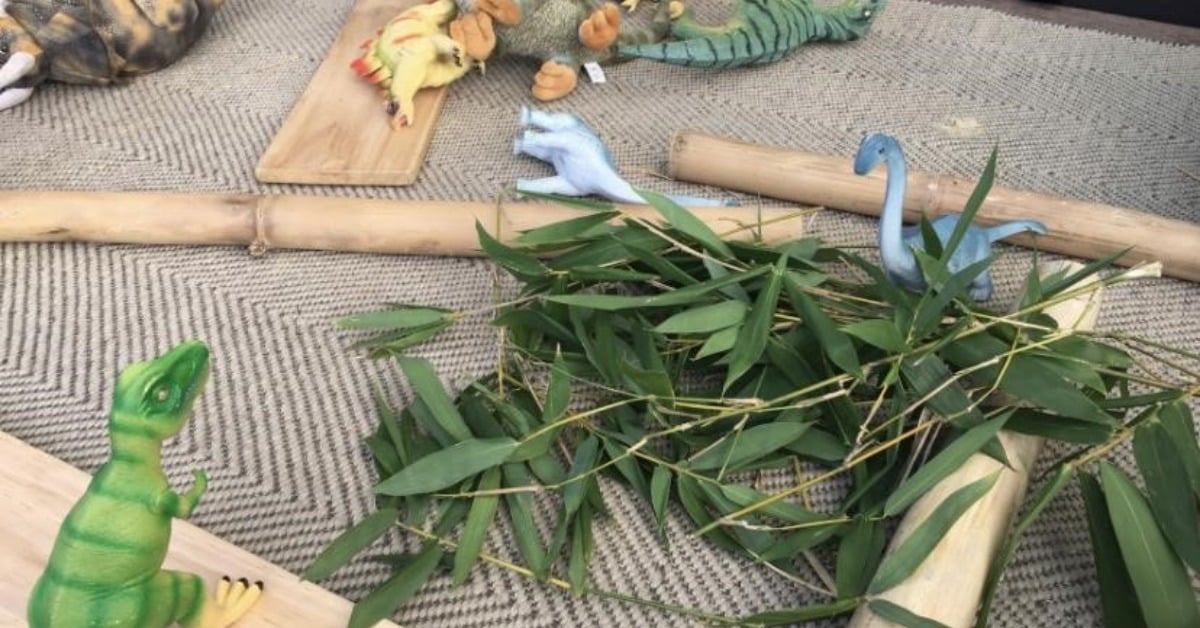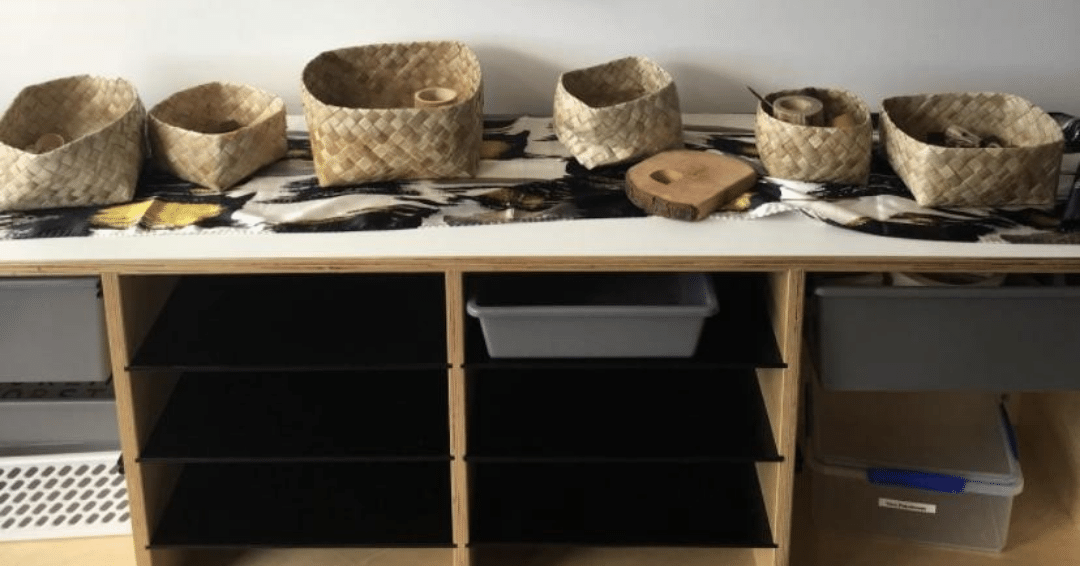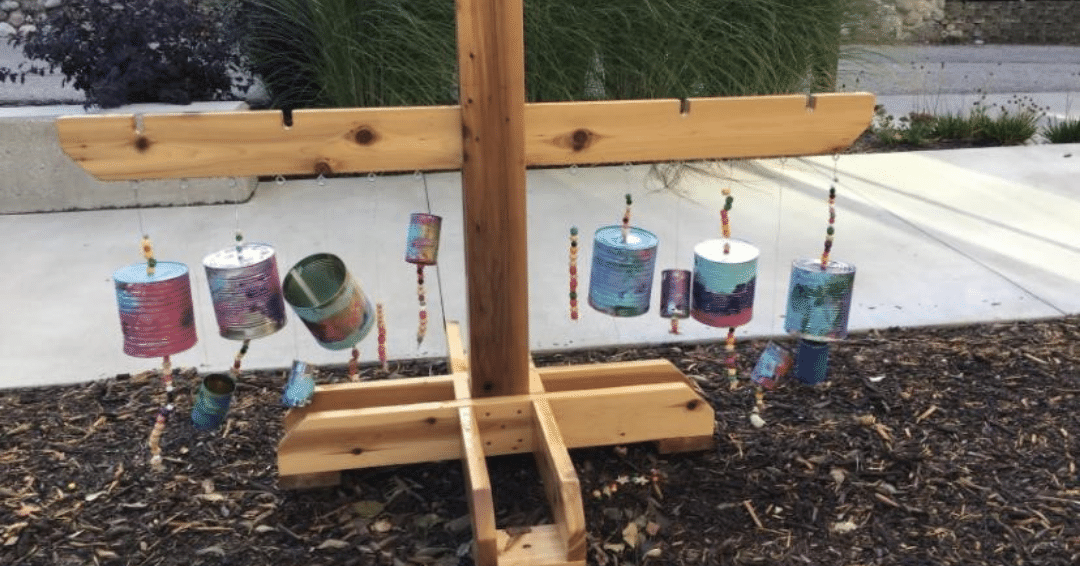Biophilia in Early Childhood Education

What is biophilia?
Simply put, biophilia design is blending nature into spaces to improve the health and well-being of those who use the spaces. We have all felt the innate pull, or connection, children and adults have with nature. Biophilic design is used within buildings to increase our connectivity to the natural environment through the use of direct nature, indirect nature and space and place.
When I was first introduced to biophilia design I wondered about children and teachers often in buildings that weren’t designed for young children and recognizing that they are often in care for several hours. How do we borrow from this research to enhance classrooms and buildings? Biophilic design is especially powerful for children who may have little access to natural environments when they are home. Research by Stephen Kellert, Elisabeth Calabrese and Richard Louv supports when we work and play in spaces reflecting biophilia we increase our overall health including less stress, more productivity and higher creativity.
CLASSROOM ENVIRONMENT

In classrooms, the goal is to increase the number of natural materials and elements. Here are some ideas of what that looks like:
- Natural storage: Make a goal to eliminate as much plastic as possible. Consider adding baskets made of natural fibers and plants. Thrift stores and garage sales often have baskets at low cost.
- Plants and flowers: Did you know they boost happiness? Families can be an excellent resource for sharing their clippings to start your own plants.
- Discovery baskets: Intentionally create opportunities for children to touch shells, pinecones, rocks, and branches/twigs.
- Classroom critters: Consider including worm farms, hatching chicks and classroom pets such as fish.
- Music: Add nature sounds to the daily playlist and engage children with conversations on what the sounds are.
- Tabletop water fountains: Something you can pick up at garage sales or ask families for as a donation.
- Light: If you are lucky enough to have windows make sure you don’t block them. Supplemental lighting such as lamps, twinkle lights and led candles are less harsh than overhead lighting.
- Colors: Select colors in the room that lean towards earth tones.
- Pictures and fabrics: Look for nature themes such as animals, water scenes or landscapes in pictures you post in the classroom. Placing pictures in small frames intentionally throughout the room can be powerful. There are many wall decals available such as trees that would support the principles of biophilia. The fabrics we select for pillows, window coverings can be subtle nods to biophilia.
- Take it outside: Whenever possible, take it outside. Take your small group, snack or circle time outside.
- Classroom jobs: Water the plants/flowers, weather watcher and bird feeder support.
- Classroom visitors: Invite classroom visitors who support biophilia. This could include a botanist or a nature center guide.
- Field trips: Go to the Farmers Market, plant store or nature center.
LEARNING CENTERS
There are many opportunities within the learning centers we offer children to increase biophilia.
- Water and sand play: Whenever possible either individually or as a group, connect children to the elements. (Consider individual dish pans for children.)
- Rock and stick play: A basket of mid-size rocks and sticks children have gathered.
- Block area: Having textured materials such as backsplash for kitchens (stone, tile, etc.) rocks and sticks available for children to use to enhance their play.
- Science and nature: As many real experiences as possible. Leaf matching, pinecone, animal tracks, shells, bark, discovery bottles, plants and seeds.
- A Zen Zone (Quiet Space): Pillows with nature books and materials can be a calming space to children. Consider spaces that children can have the “illusion of hiding”.
- Book center: Selection of books with nature themes such as our book sets about gardens and book sets about rocks. (Resource list at end of blog post).
- Math center: Stock the math learning center area with natural items to count, match, seriate and group.
- Writing center: Include words relevant to children’s interest such as pine tree, oak tree, pinecone, sap or leaf.
- Dramatic play: Set up a Botanical Garden, Nature Center, Veterinarian or Farm for children to explore in the dramatic play area.
- Housekeeping: Blankets with earth colors, baskets that are wicker/natural materials.
- Art and creation center: Create art on found materials such as bark, leafs, paper bags or boxes.
- Light table: Basket of nature items to use on a light table such as shells, leafs, flowers and sand.
- Manipulatives/Table Top: Puzzles with nature themes and wood play materials.
LEARNING EXPERIENCES
Learning experiences that are planned intentionally have a big impact on children’s development. Including opportunities to connect them to nature throughout the week is important.
- Scavenger hunts: Plan a scavenger hunt in small groups for nature items. Keep it simple and do it often. Have children make a list or draw pictures of what they found.
- Art: Paint pictures of plants and flowers. Paint with flowers, leaves, or sticks. Paint with mud and/or sand mixed into paint. Tree and leaf rubbings. Paint rocks big and small…. give them to other rooms as gifts.
- Vocabulary: Intentionally brainstorming vocabulary you will use with children for the week around your plans is essential. Nature is ripe for new words…. drizzle, blazing or drought when describing weather.
- Social emotional: Create opportunities for children to describe how they feel when they are in nature. Tapping into the magic they often describe.
- Movement: Spending time dancing like the trees, moving like the rain or doing yoga in the grass is time well spent.
- Circle Time: Planning songs, books, flannel boards and conversations around books such as Leaf Man or We Dig Worms is engaging and fun.
- Rock and stick play: Making shapes, numbers and letters with sticks and stones is an excellent hands-on experience for young children.
- Technology: Look up nature questions and images online. The web is rich with materials for discovery.
OUTDOOR SPACES

Outdoor spaces typically have more opportunities to increase biophilia. Start small and work with your families and community to build an outdoor space that reflects biophilia.
- Gardens: Big or small gardens matter. Flowers, vegetables, and fruit can be tended to in very small containers and spaces.
- Natural materials: Logs to climb over, sit on and roll. Rocks to move around the playspace.
- Mud kitchens: Design a simple outdoor mud kitchen for children to manipulate grass, twigs, etc.
- Birdhouses and bird feeders: Have children make a birdhouse and bird feeder for the outdoor space.
PROGRAM WIDE IDEAS
Working program wide to support biophilia is meaningful and creates a sense of connectedness. This is not necessary however it can be impactful.
- Proper gear: Invest in gear for all types of weather. This includes umbrellas and rain boots. (These can be purchased at the end of season, donated or via a grant.)
- Family events: Have a bulb planting activity (send home some with the family). Have a family trip to the Nature Center.
- Special days: Celebrate special days such as Earth Day by planting trees. During the fall time have a pumpkin patch set up on your outdoor space.
We connect and bond with nature and the natural environment. Finding some new opportunities to enhance our learning environments, experiences inside and outside will have positive results for children and adults.
BIOPHILIC DESIGN RESOURCES
Nature Book Resources
https://mothernatured.com/parenting/nature-books-for-kids/
https://runwildmychild.com/educational-nature-books/
https://www.naturalbeachliving.com/childrens-books-about-nature/
https://www.readbrightly.com/childrens-books-outside-explore/
Research on Nature and Children
http://richardlouv.com/books/last-child
http://richardlouv.com/books/last-child/resource-guide#books
Resources on Biophilic Design
https://www.terrapinbrightgreen.com/reports/14-patterns/
Research on Biophilic Design
http://etd.lib.metu.edu.tr/upload/12625121/index.pdf
 JaneAnn Benson founder of Early Childhood Ally has been in the field for almost 40 years as a teacher, coach, mentor and director.
JaneAnn Benson founder of Early Childhood Ally has been in the field for almost 40 years as a teacher, coach, mentor and director.
She spent the past 20 years at Grand Rapids Community College leading and directing the Early Childhood Learning Laboratory, an accredited, star rated program in the heart of Grand Rapids, Michigan. Over the past year she transitioned to semi-retirement and remains as a coach and mentor with the Play and Learn project.
As a longtime advocate of all issues impacting the field of early childhood she has more time to devote to her passion. Check out Early Childhood Ally on Instagram, signing up for the monthly newsletter and visiting her website at www.Earlychildhoodally.org where she is eager to hear more about your needs and connecting!
The opinions, representations, and statements made within this guest article are those of the author and not of Becker’s School Supplies as a whole. Any copyright remains with the author and any liability with regard to infringement of intellectual property rights remain with them. The company accepts no liability for any errors, omissions or representations.
